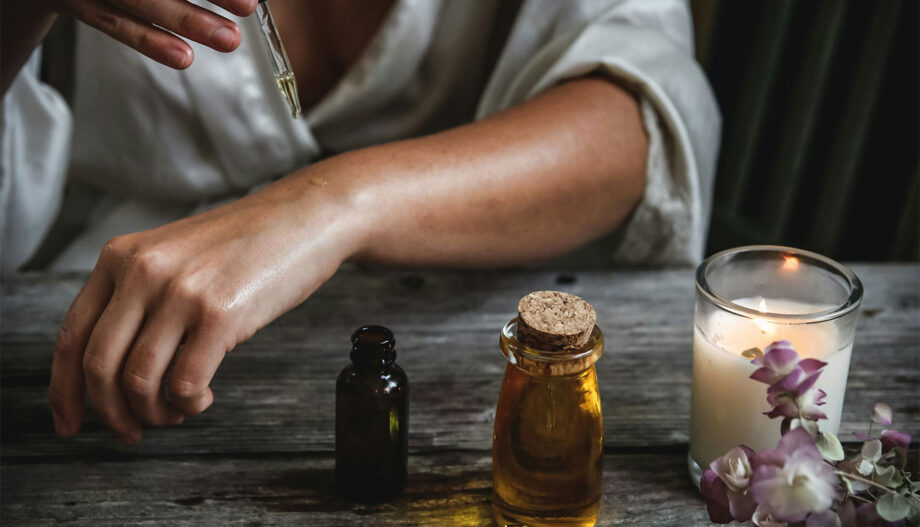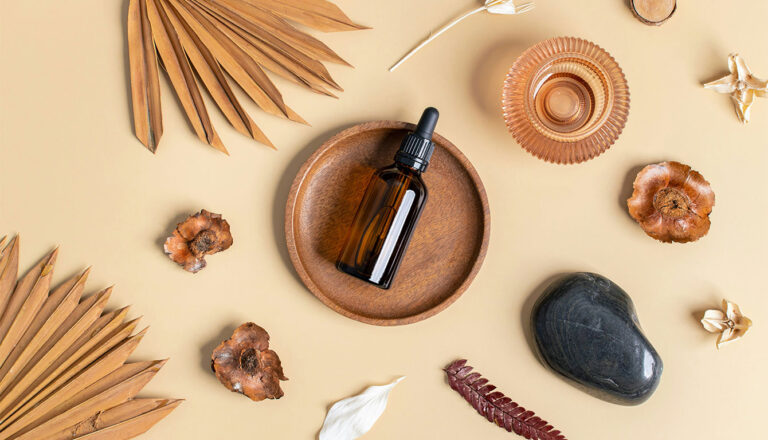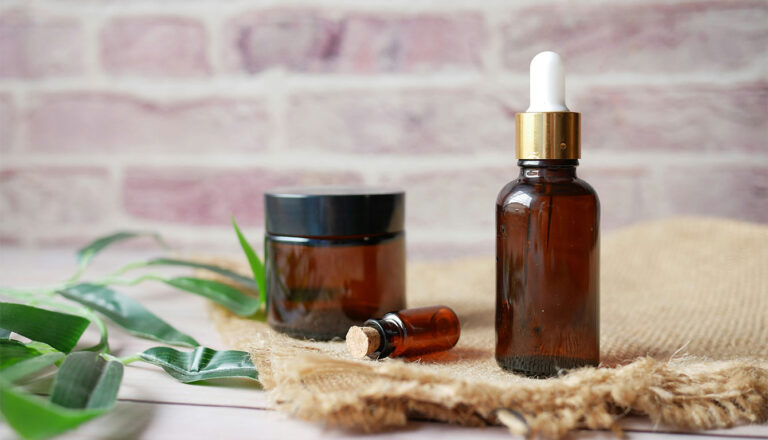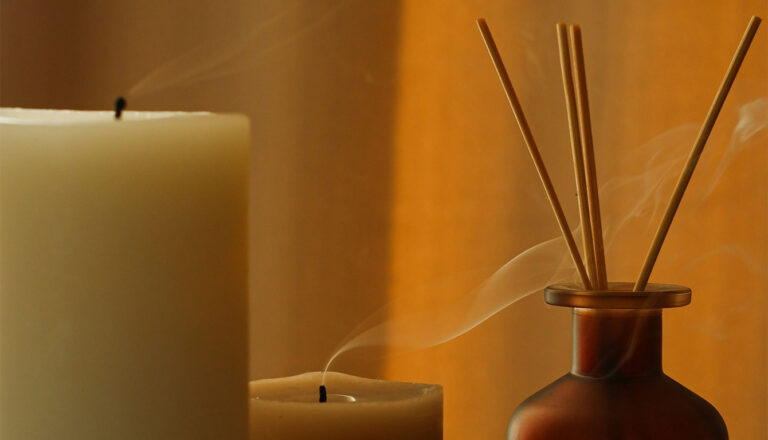This friendly guide shows a simple way to craft a natural massage blend using common carrier oils and a few essential drops. It suits first‑timers and anyone who prefers plant‑based choices for skin and relaxation.
Start by choosing a carrier such as sweet almond or grapeseed, which are odourless and carry essential extracts safely. An amber glass bottle helps shield the blend from light and keeps aromas fresher for longer.
The method is straightforward: measure, add 6–8 drops of your chosen essential, top up with carrier, shake and patch test. You will learn pairing ideas for sleep, sports recovery and sensitive complexions, plus dilution rules for safe use.

Making your own blend offers flexibility — lighter glide for general work or thicker feel for focused bodywork. This UK‑focused guide also notes where supplies are often sourced locally and how best to store your blends.
For further reading on benefits and practical uses, see this short resource at aromatherapy massage.
Key Takeaways
- Use a gentle carrier like sweet almond or grapeseed for safe skin contact.
- Add 6–8 drops of essential extracts per 50 ml amber bottle and shake well.
- Amber bottles protect blends from light and extend shelf life.
- Follow simple dilution rules and perform a patch test to avoid irritation.
- Choose blends based on purpose: relaxation, recovery or sensitive skin.
Why make your own aromatherapy massage oil in the UK
Crafting your own blend gives you clear control over every ingredient and helps avoid hidden additives that can irritate sensitive skin. Many UK brands such as Songbird, NAQI and Physique offer tested bases, yet a home blend offers extra peace of mind for clients and households.
Personalisation matters. You can select essential oils that match each treatment aim — calming, uplifting or invigorating — and adjust dilution for comfort. That choice is harder when you rely on a single shop product.
Building a small, curated range keeps your basket tidy. You can refill a favourite 50 ml bottle, buy carriers in bulk and save money over time while tailoring glide and grip for different techniques.
- Pick milder aromas for reactive skin and avoid known triggers.
- Blend seasonally — lighter finishes in summer, richer in winter.
- Source everything easily across Britain for reliable re‑ordering.
Practitioners and home users alike find that a few reliable combinations make essential oils massage simple, consistent and suited to each treatment.
Choose your base: the best carrier oils for skin and technique
Pick a base that matches skin type and the work you plan to do. Lighter carriers absorb quickly and suit faster strokes. Richer bases give lasting glide for slower, deeper work.
Grapeseed — lightweight and hypoallergenic
Grapeseed is a by‑product of winemaking and contains vitamins A, B, D and E plus essential fatty acids. It absorbs fast and suits oily or sensitive skin well.
Use grapeseed when you want a clean finish and a neutral scent. For larger bottles, consider a labelled physque grapeseed massage or a grapeseed massage oil format from UK suppliers.
Sweet almond — nourishing and soothing
Sweet almond brings vitamins E and A and mild anti‑inflammatory support. It gives a supple feel that helps with dry skin and tired muscle areas.
Look for sweet almond or sweet almond oil in 500 ml or 5 litre refills if you treat regularly.
Jojoba — balanced, skin‑mimicking carrier
Jojoba is technically a wax ester. It behaves like skin sebum, is antioxidant and helps carry essential oils carrier blends without feeling greasy.
Waxed and spirit bases for control
Songbird Unscented Massage Wax, Liquiwax and NAQI Premium Soft Tissue Massage Wax give extra grip for deep work and are kind to reactive skin.
Physique Sports Cologne acts as a spirit‑based pre/post option that refreshes skin and limits residues. For a practical primer on carrier choices, see this carrier oil guide.
- Tip: build a small kit — grapeseed for everyday use, sweet almond for dry seasons, and a wax for remedial work.
Essential oils that set the mood and purpose
Match each aroma with its purpose, using floral anchors for calm and minty tones for alertness. This short guide highlights common choices and practical pairings used across the UK.
Relax and unwind: lavender as a calming staple
Lavender essential oil is prized for easing stress and mild headaches. A brief temple rub with a diluted drop can aid rest and quiet the mind.
Cooling and invigorating: peppermint for sports and focus
Peppermint brings a cooling, antispasmodic lift that sports therapists favour after exercise. It pairs well with eucalyptus for a brisk, clean profile.
Soothing discomfort: frankincense and rose geranium for muscles and skin
Frankincense helps with day‑to‑day muscle and joint discomfort and can improve mood via inhalation. Rose geranium supports skin elasticity and calms irritation when blended gently.
Women’s comfort: clary sage with timing cautions
Clary sage soothes menstrual cramps and can be comforting around the cycle. However, avoid use close to the due date during pregnancy and follow pregnancy guidance.
Other classics: eucalyptus, tea tree, lemon and more
Tea tree adds a cleansing, anti‑inflammatory note, while lemon offers bright top notes for a cheerful effect. Build simple blends: one anchor plus one or two accents keeps scents balanced.
- Tip: choose calming extracts for evening, brighter scents for daytime, and resinous tones for grounding.
- Start with fewer drops, patch test, then adjust so your blend remains pleasant and never overwhelming.
Safe dilution, blending ratios and skin considerations
Safe dilution is the cornerstone of pleasant, skin-friendly blends when working with concentrated extracts. Use clear ratios and simple records so each bottle gives consistent results.
Starter and maximum ratios
Begin with a gentle ratio: add 6–8 drops of essential oil into a 50 ml bottle. This keeps the aroma mild while you assess comfort and scent strength on the skin.
For stronger blends, follow the upper guideline of up to 18 drops per 30 ml carrier and scale proportionally (for example, 36 drops for 60 ml). Stay under this limit for safety.
Skin testing and sensitive users
Always patch test on the inner forearm and wait 24 hours before wider use. Note reactions and adjust dilution for children, older adults or reactive skin.
Choose hypoallergenic bases such as grapeseed or neutral waxes like NAQI Premium Soft Tissue for sensitive skin. These carriers help delivery and reduce irritation.
Pregnancy and labelling
Take care in pregnancy; avoid clary sage before the due date and consult a trained therapist when in doubt. Label each bottle with blend name, drops, carrier and date. Keep equipment clean and store upright in a cool, dark place.
- Tip: keep a simple blending log so you can repeat a successful mix or improve the next time you make massage oil.
How to make aromatherapy massage oil
Set up a small, tidy station on a steady surface with an empty 50 ml amber bottle, a small funnel, measuring jug, labels and a pen. Clear space prevents spills and helps accurate counting of drops.
Prepare your tools
Add essential oils first into the bottle so each drop is easy to track. For a standard 50 ml bottle, place 6–8 drops as a gentle starting point.
Mixing method
Top up with your chosen carrier — sweet almond or grapeseed work well — filling to the shoulder. Fit the cap and shake gently for 10–15 seconds to disperse the scent evenly through the carrier.
Test, adjust and record
Check the scent and add a couple more drops only if needed. Smooth a little on the inner forearm for a skin check. Label the bottle with the recipe and date so you can recreate a favourite blend.
- Rinse and dry funnels and tools right away.
- Store the bottle in a cool, dark place away from heat and direct sun.
- Build a small rotation: calming blends for evening and brighter blends for daytime.
Tried-and-tested blend ideas for different goals
Below are simple, trusted blends designed for calm evenings, post‑exercise refreshment and sensitive skin. Each recipe uses the starter method: 6–8 drops total in a 50 ml carrier.
Deep relaxation bedtime blend
Bedtime calm: in 50 ml carrier, try 4 drops lavender essential oil plus 2 drops frankincense. Apply a small amount on wrists or chest for a gentle, grounding finish.
Cooling sports recovery
Cooling sports recovery: combine 3 drops peppermint with 3 drops eucalyptus in a light carrier. This crisp mix feels refreshing on tired muscle areas after exercise.
Sensitive skin and dry skin options
Sensitive skin support: use grapeseed with 2–3 drops rose geranium for a very mild scent that soothes skin.
Dry‑skin comfort: sweet almond with 3 drops lavender and 2 drops frankincense gives a richer glide for slow, nurturing work.
Women’s cycle and neutral base
Women’s cycle soother: after the due date only, blend 2 drops clary sage, 2 drops lavender and 2 drops rose geranium. Use gentle pressure on the lower back and abdomen.
Unscented option: choose Songbird Unscented Massage Wax or Unscented Liquiwax when scent is not wanted and technique alone should be the focus.
| Purpose | Carrier | Drops (50 ml) | Notes |
|---|---|---|---|
| Bedtime calm | Light carrier | 4 lavender, 2 frankincense | Use on chest or pulse points |
| Sports recovery | Grapeseed or light wax | 3 peppermint, 3 eucalyptus | Cool, crisp sensation for muscle relief |
| Sensitive skin | Grapeseed | 2–3 rose geranium | Very mild scent; patch test first |
| Dry skin | Sweet almond | 3 lavender, 2 frankincense | Rich glide for slow work |
- Add a single drop of a warm spice for evening cosiness, keeping totals safe.
- Move slowly with steady strokes for muscle comfort and let the carrier absorb.
- Keep blends simple — two or three essential oils massage nicely without clashing.
- Label every bottle with recipe and date for easy repeats next time.
UK-friendly sourcing, packaging and storage tips
Stocking reliable supplies makes kit prep simple and safe. Physique, Songbird and NAQI cover most needs, from grapeseed massage oil and sweet almond bases to wax formats and sports lotions. Choose products that match your practice and client needs.
Where to buy in Britain: trusted brand ranges
Physique lists Grapeseed Massage Oil and Physique Sweet Almond in 500 ml and 5 litre refill sizes, often sold with pump dispensers for clean dispensing. Songbird offers Unscented Massage Wax, Unscented Liquiwax and many items marked as New Packaging Songbird — handy when keeping labels consistent. NAQI supplies Premium Soft Tissue and soft tissue massage lotions for sports and clinic work.
Bottle sizes and accessories
Pick bottle sizes that suit use. Small clinics often use 200–300 ml bottles for blends, while professionals keep massage oil 500 and massage oil litre refills on hand. For bulk containers, add a pump to 5 litre cans for tidy decanting.
Storage best practice
Store blends in amber glass away from heat and light. Label each bottle with date, recipe and any cautions. A clear basket or rack helps rotate stock so older items are used first.
Warming, dispensing and kit hygiene
Gently warm a bottle in an oil warmer before use in colder months for client comfort. Use single or double holsters and wipe dispensers between sessions. Keep funnels and pumps rinsed and dry to avoid contamination.
| Need | Recommended product | Sizes | Notes |
|---|---|---|---|
| Neutral base | Songbird Unscented Massage Wax / Songbird Vegan Unscented | 200–300 ml, 500 ml, 5 litre | Use for fragrance‑free sessions; avoid cross‑scenting |
| Everyday carrier | Physique Grapeseed Massage / Physique Sweet Almond | 500 ml, 5 litre (pump available) | Good for refills; grapeseed massage oil suits sensitive skin |
| Clinical wax | NAQI Premium Soft Tissue | 500 ml, 5 litre | Supports focused techniques; hypoallergenic |
| Accessories | Pumps, holsters, warmers, empty bottles | 200–300 ml bottles, pump dispensers | Keep a mix for decanting and tidy presentation |
Conclusion
This short wrap-up pulls the guide together and leaves you ready to blend with confidence.
Keep safety first: use 6–8 drops of an essential oil in a 50 ml amber bottle, top with a carrier oils choice such as grapeseed, sweet almond or jojoba, label clearly and patch test. Rotate grapeseed for reactive skin and sweet almond for dry skin. Consider wax or soft tissue formats for focused work.
Source reliably in the UK from Physique, Songbird and NAQI, record each recipe and refine by small steps. Enjoy the process; scent, skin comfort and steady technique are what make every massage oil feel special.
FAQ
What carrier oils work best for different skin types and techniques?
For oily or reactive skin, choose grapeseed — it feels light and absorbs quickly. Sweet almond suits dry or mature skin, offering nourishment and anti‑inflammatory benefits. Jojoba is great for most people because it mimics skin’s natural sebum and adds antioxidant support. For extra control or a firmer medium, consider Songbird massage wax or NAQI soft tissue wax.
Which essential oils are best for relaxation, recovery and skin support?
Lavender is a calming staple for relaxation. Peppermint brings a cooling, invigorating effect useful for sports recovery. Frankincense and rose geranium soothe muscles and sensitive skin. Eucalyptus, tea tree and lemon offer antiseptic and clearing properties; use them sparingly and always dilute in a carrier.
What dilution ratio should I use for a 50 ml amber bottle?
A simple starter ratio is 6–8 drops of essential oil into 50 ml carrier. That gives a gentle aromatic effect suitable for general use. For stronger blends, follow recommended maximums and stay within safe guidelines.
Are there maximum safe levels for essential oils in blends?
Yes. A commonly cited upper guideline is around 18 drops per 30 ml carrier for short‑term, targeted use, but that is not suitable for all oils or all people. Always scale ratios down for large bottles and never exceed recommended concentrations for sensitive groups.
How do I perform a patch test for sensitivity or allergies?
Mix your intended blend at full dilution. Apply a pea‑sized amount to the inner forearm and cover with a plaster for 24 hours. If redness, itching or irritation appears, wash off and avoid that oil. Patch testing is essential for sensitive skin and new blends.
Which oils or blends should be avoided in pregnancy or with health conditions?
Certain oils such as clary sage, rosemary and high concentrations of peppermint may be contraindicated in pregnancy or for people with specific medical conditions. Pregnant clients and those with epilepsy, high blood pressure or severe allergies should consult a healthcare professional before use.
What are quick, reliable blend ideas for relaxation and sport recovery?
For deep relaxation, combine lavender with a mild carrier like sweet almond. For cooling sports recovery, blend peppermint with eucalyptus in a grapeseed base. For sensitive skin, use a gentle grapeseed carrier with low concentrations of calming florals.
Can I use unscented massage wax or Liquiwax as a base instead of liquid oils?
Yes. Songbird Unscented Massage Wax and Liquiwax offer a fragrance‑free option that gives more grip and less absorption. These are useful for clients who prefer no fragrance or need a longer lasting medium during treatment.
Where can I buy reputable carrier oils and accessories in the UK?
Look for established suppliers such as Physique, Songbird and NAQI, along with specialist aromatherapy retailers. Buy amber glass bottles, funnels, pumps and clear labels; common sizes include 200–300 ml, 500 ml and 5 litre containers for clinic use.
How should I store blends and prepared bottles?
Store in amber glass, keep bottles in a cool, dark cupboard and label each with contents and date. For best quality, use blends within six to twelve months, depending on the carrier oil’s shelf life. Keep kit clean and warm bottles mildly before use if you prefer a warmer application.
Is there a standard method for mixing essential oils with a carrier?
A reliable method is to add essential oils into the empty amber bottle first, then top up with your chosen carrier using a small funnel. Cap and shake well, label and record the recipe for consistency. This reduces dilution errors and helps preserve volatile aromas.
What packaging and dispensing options suit professional use?
For clinics, larger 500 ml or 5 litre containers with pump dispensers work well. Amber glass or food‑grade PET keeps oils stable. Use pump bottles for single‑use dispensing and smaller amber bottles for personalised blends to give clients a neat, professional presentation.





